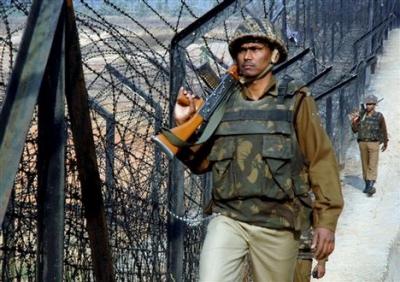None of India’s historical insurgent movements ever encompassed more than 5 – 6 per cent of the population and area at any one time. By contrast, Naxalism currently affects 25 – 30 per cent of India. The Naxalism-affected areas include about 200 districts in more than 15 provinces. These districts account for almost the entire mineral wealth of India, and are responsible for a large share of India’s electricity generation and forest products. Naxalism has also engulfed two important ports and six major cities including Hyderabad.
But despite the magnitude of the Naxal problem, it is highly unlikely that the central government will be able to properly respond to it in 2010. There are three reasons for this.
First, within a few weeks, the monsoon will render most of the Naxalism-affected areas unsuitable for counter-insurgency operations till early October. If the monsoon is only moderate, or weaker than normal, containing food prices will be the first priority of the government.
Second, three of the six most affected provinces will soon face assembly elections: Bihar and Jharkhand (2010), and West Bengal (2011). The case of West Bengal is particularly interesting. There, a union minister in the UPA government, whose regional party swept the just concluded municipal elections in West Bengal, has been drawing tacit support from the Naxals and has seriously limited New Delhi’s policy choices.
In addition to these political considerations, the scope for making major policy decisions will be limited once the model code of conduct comes into effect, which restricts incumbents from announcing new policies close to an election. Further, elections can be held only after the rainy season. So even after the rainy season is over the counter-insurgency policy will remain restricted for a few months by the model code and the need to organize peaceful elections.
Third, the Congress party, which heads the coalition government, is divided on how to deal with the issue and there is no sign of an emerging consensus. There are those in the government, like the Home Minister, who want to address the problem on a priority basis with the use of force, if required. But there also those in the party who want to keep considerations of electoral calculus at the centre of any counter-insurgency operation. Ideally, the government wing of the party should dominate. But, at present, the balance of power is in favour of the party wing. This is for three reasons. First, the Congress party is essentially organized by the Gandhi family but the head of the family is not part of the government. Second, none of the key union ministers affiliated to the Congress party has mass support in the Naxalism-affected provinces. Therefore, those in the government have to depend on the party to build popular consensus against the Naxals. Lastly, the government itself is divided with the Defence Ministry strongly against using defence forces in domestic conflicts.
In short, there is little scope for the central government to constructively respond to the Naxal issue in 2010. Even existing policies cannot be implemented effectively because the Congress party is in power in only one of the six provinces most affected by Naxalism. But even though democracy has limited the options of the government, it has nonetheless produced a clear benefit. It is only because India is a democracy that the government will not be able to use draconian measures against Naxals, because these measures could irreversibly alienate people in the conflict zone.

